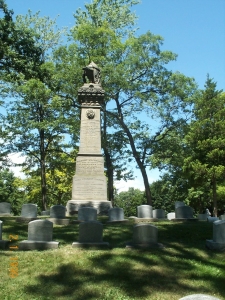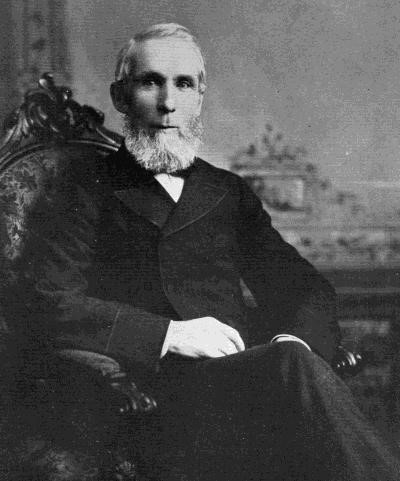by Pat Maclean
Born on January 28, 1822 in Logierait, Scotland, one of seven sons, Alexander Mackenzie attended schools in Perth, Moulin and Dunkeld before apprenticing as a stonemason.
He emigrated to Canada in 1842, settling in Kingston, where he married his first wife, Helen Neil, whom he had followed from Scotland. Of their three children, only their daughter, Mary, survived infancy.
Moving to Sarnia in 1847, he continued his occupation of stonemason and contractor. He also founded The Lambton Shield Newspaper which he edited for two years before The Sarnia Observer began publication. Active in local affairs, he was a major with the 27th Lambton Volunteer Infantry (1866-1874).
Alexander Mackenzie regularly attended a Baptist church seven miles outside the town, and the year following Helen’s death in 1852, he married a lady he had met there by the name of Jane Sym.
Elected in 1871 as the Reform (later Liberal) Party representative to the Legislative Assembly of Canada, he initiated a law which forbade one representative sitting both federally and provincially. In 1872, Alexander chose to be this riding’s federal representative.
When George Brown resigned the leadership of the Liberal Party, Mackenzie was chosen the new leader. In November, 1873, the Pacific Scandal brought down John A. MacDonald’s Conservative government, and Mackenzie was called upon to form a new administration. So it was, that in 1874, Alexander Mackenzie, Scottish stonemason, became the Dominion of Canada’s 2nd Prime Minister, and the country’s first Liberal leader.
MacDon ald’s government was returned to power in 1878 and Mackenzie became Leader of the Opposition. Living in Toronto, he represented the riding of York East until his death on April 17, 1892. It was during this time that he also became president of Isolated Risk Fire Insurance Company.
ald’s government was returned to power in 1878 and Mackenzie became Leader of the Opposition. Living in Toronto, he represented the riding of York East until his death on April 17, 1892. It was during this time that he also became president of Isolated Risk Fire Insurance Company.
Following a funeral service in Toronto, which was attended by many of the nation’s most noted dignitaries, his body was transported by train to Sarnia, where another service was held the following day at St. Andrew’s Presbyterian Church.
A long funeral cortege accompanied his body, where it was laid to rest in the family plot at Lakeview Cemetery.
Today, over 50 members of the Mackenzie family are interred in this plot which is dominated by the 19 foot monument.
In 1998, the Government of Canada declared this site a National Monument.
Major Accomplishments:
- Instituted the secret ballot.
- Limited elections to one day.
- Founded the Royal Military College at Kingston.
- Created the Supreme Court of Canada.
- Created the Office of the Auditor General.
- Began the publication of Hansard, the daily account of the House of Commons.
Other Mackenzie’s
Alexander, although the most prominent, was not the only politician in the family.
His brother, Hope Fleming Mackenzie, who was born May 24, 1821 in Perthshire, Scotland, came to Sarnia in 1847 and went into the cabinet-making business with his brother Robert.
He was the first member of his family to enter Parliament. Although defeated by Malcolm Cameron in 1857, he was successful in being elected for Lambton in 1859 and held the seat until the general election of 1861.
Again offered the nomination, he declined on business grounds, and his brother Alexander, the future Prime Minister, was elected for Lambton.
In 1863, Hope was elected M.P.P. for North Oxford, a position he held until his death in Sarnia on the 4th of June, 1866, in his 46th year. He is buried in the family plot.
Another brother, Charles Mackenzie, born on the 5th of October, 1833 in Scotland, was the co-founder of Mackenzie Milne Hardware Co.
Charles resided for many years in Mackenzie House on Christina Street. The house had originally been built for Alexander’s brother John and his wife. Following John’s death, Charles bought the house from his widow. Following Alexander’s death in 1892, the former Prime Minister’s body lay in Mackenzie House overnight before his funeral service the next day at St. Andrew’s Church.
Charles was M.P.P. for West Lambton from 1889 to 1894 and also Warden of the County of Lambton in 1888.
A director of the St. Clair Tunnel Company, he also promoted the Sarnia Transportation Company. Charles died September 4, 1899 and is buried in the Mackenzie plot.


